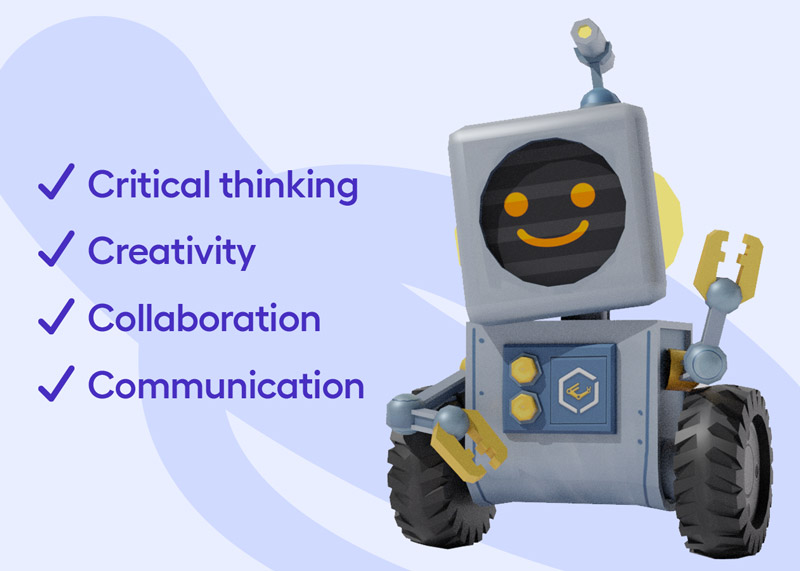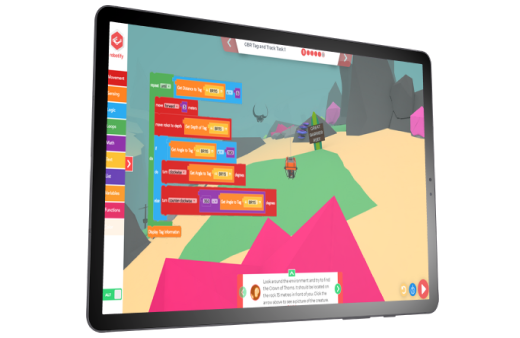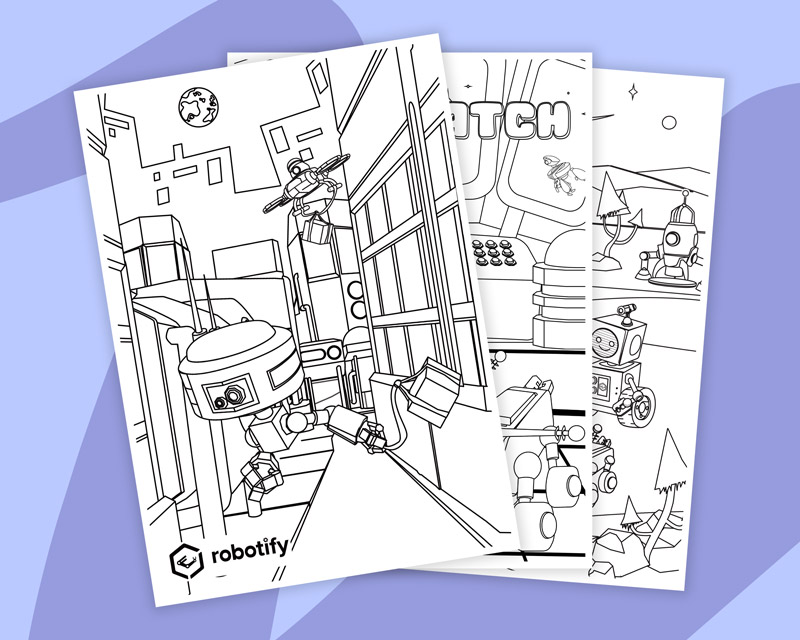
November 22, 2022 8:00 am
Celebrate Computer Science Education Week and the international Hour of Code by exploring the four Cs of STEM. Students can learn about real-world applications of the four Cs in computer science from Chicago to Mars.
Digital tools, automation, network security, and AI are shaping our future. Recognizing the increased demand for digital literacy in the workforce, more than 500 CEOs recently petitioned education leaders to prioritize computer science instruction in K–12 schools. The U.S Department of Education followed that by launching the YOU Belong in STEM initiative to enhance science, technology, engineering, and math (STEM) education for all students.
Computer Science Education Week, December 5th–11th, is the perfect time to get involved! A great way for educators at any grade level to explore STEM (which includes computer science!) is to teach its essential skills. Four of the most important abilities in STEM are critical thinking, creativity, collaboration, and communication, also known as the four Cs. These skills are necessary for 21st-century college and career readiness, in STEM and beyond:

Computer Science Education Week presents a great opportunity to learn with your students about how the four Cs are applied in the real world. Here are three examples.
Urban Rivers creates solutions to transform urban waterways, including a volunteer-controlled robot called Trashbot that cleans the Chicago River. The creators of Trashbot used critical thinking to recognize the complex system in which Trashbot would operate while also ensuring the safety of wildlife, civilians, and infrastructure.
The team realized the robot would need to be controlled because an automated robot could pose a risk to wildlife habitats. However, financial and personnel constraints made having a manual operator 24/7 impossible.
Urban Rivers tapped into their creativity and learned from previous failures to find a solution: volunteers could control Trashbot throughout the day to clean the river safely. Next, they collaborated with volunteers to make the solution possible, using media communications to teach them how to operate the equipment. Now, Trashbot is run by community volunteers who can clean up the Chicago River regularly.
Watch this video to learn more with your students.
An unmanned aircraft system (UAS) consists of drones or satellites, and the potential uses are limitless! NASA’s UAS Traffic Management (UTM) project aims to find ways for low-altitude drones to operate in large numbers, enabling businesses like Amazon to offer drone delivery services.
The UTM team uses critical thinking skills to identify problems before they arise, such as how extreme weather could affect a drone or what happens if it is lost. The UTM project also researches how future technology would be managed. Drone technology could reduce traffic, fight wildfires, and perform dangerous tasks.
The project is complex, with many interested partners in corporations and governments. The UTM team knows collaboration and communication are the keys to the project’s success, allowing them to include the needs and challenges of different groups in the research and share that research with the public.
NASA’s UTM website provides up-to-date information and updates about the project.
The Perseverance Mars Rover roams the red landscape of Mars with the help of NASA’s scientists. On one mission, the team was challenged to drive Perseverance as far as possible. However, the rover would be self-driving, so the team needed it to drive effectively while avoiding obstacles.
The amount of possible paths to take on Mars is endless, but some paths are better than others. That’s why critical thinking is crucial to the mission: it’s used to assess the situation, make connections, and interpret data. Critical thinking also helps the team learn from previous Mars missions and determine new solutions.
Using creativity, they can overcome obstacles and imagine new ways to program the rover. The team coding Perseverance also understands how to collaborate. By working with teams across NASA and using clear and thorough communication, they can share and interpret data to put the rover on the right path.

The significance of the four Cs of STEM is apparent across these three real-world examples. Critical thinking, creativity, collaboration, and communication are key to any mission. From cleaning up a river to exploring space, computer scientists use the four Cs daily.
What about the future STEM professionals in your classroom? Students can start their own journeys to Mars and practice the four Cs by celebrating Computer Science Education Week and participating in its international Hour of Code.
Hour of Code is – you guessed it – a one-hour introduction to computer science, using activities to show that anybody can learn the basics. If your school doesn’t already have a coding program, a few fun options to spark engagement and pique students’ interest could include:
Whether you celebrate Computer Science Week and Hour of Code with robots and crayons or by exploring essential skills, you’ll create more STEM possibilities for your students’ futures.
